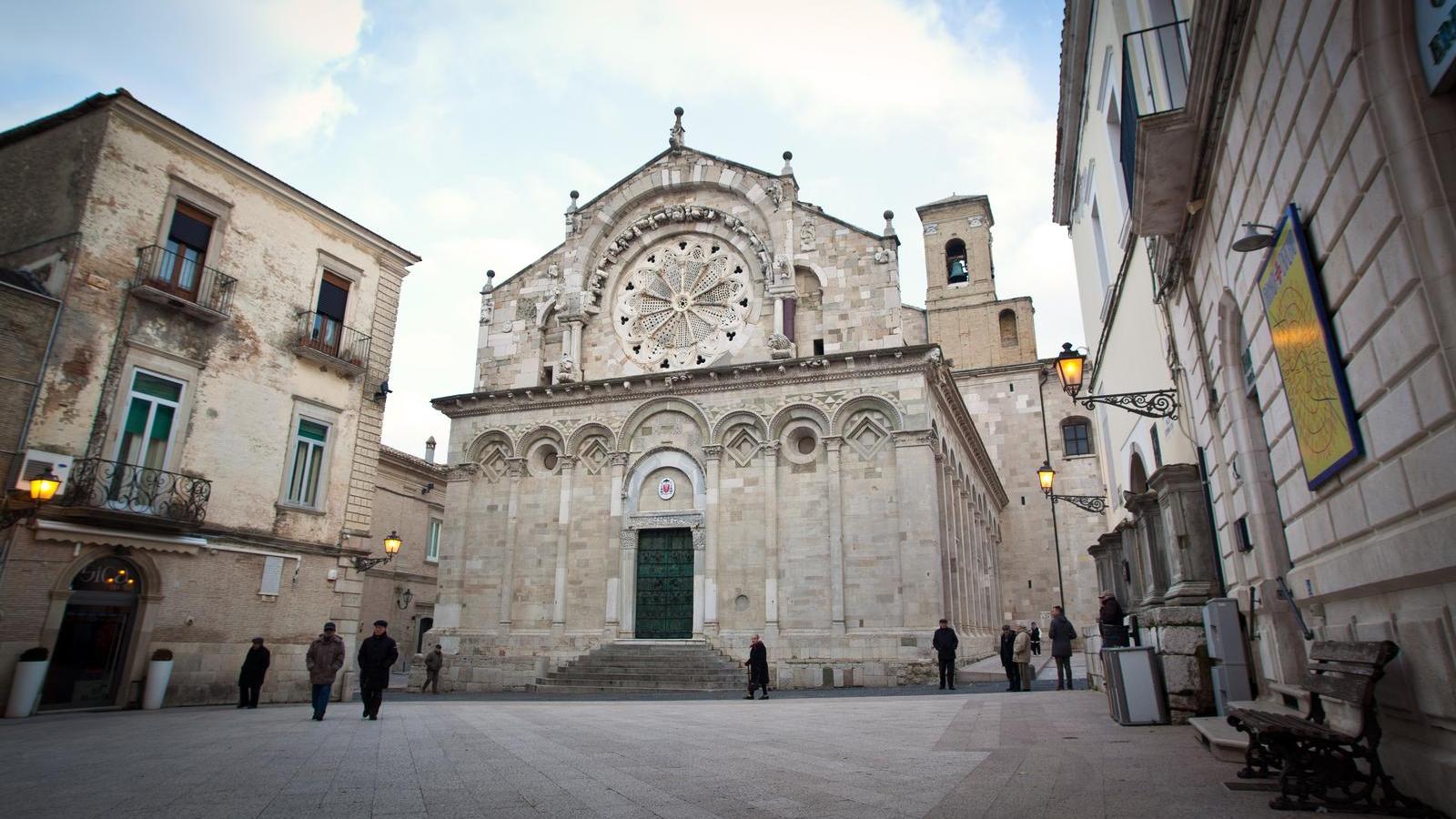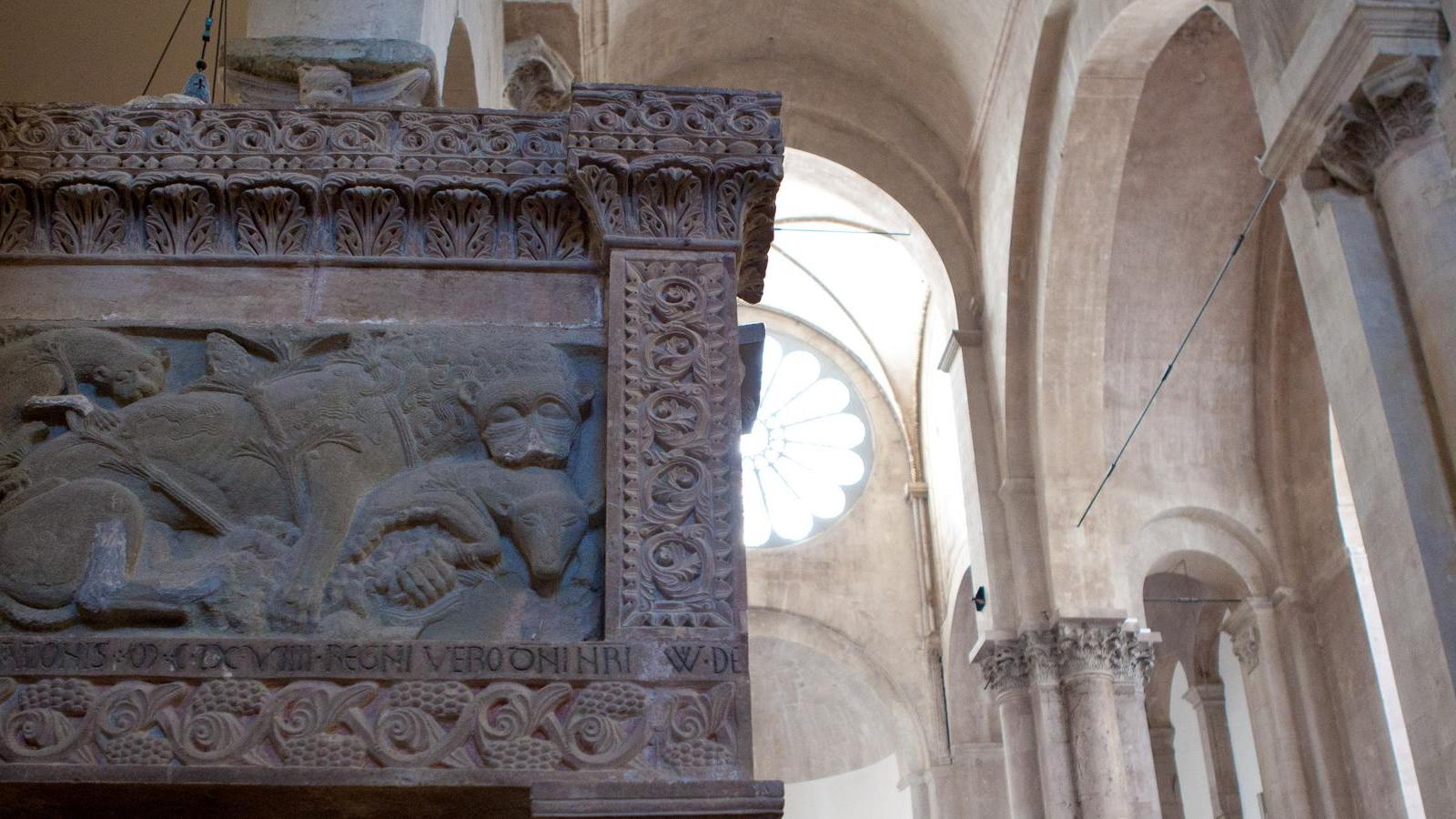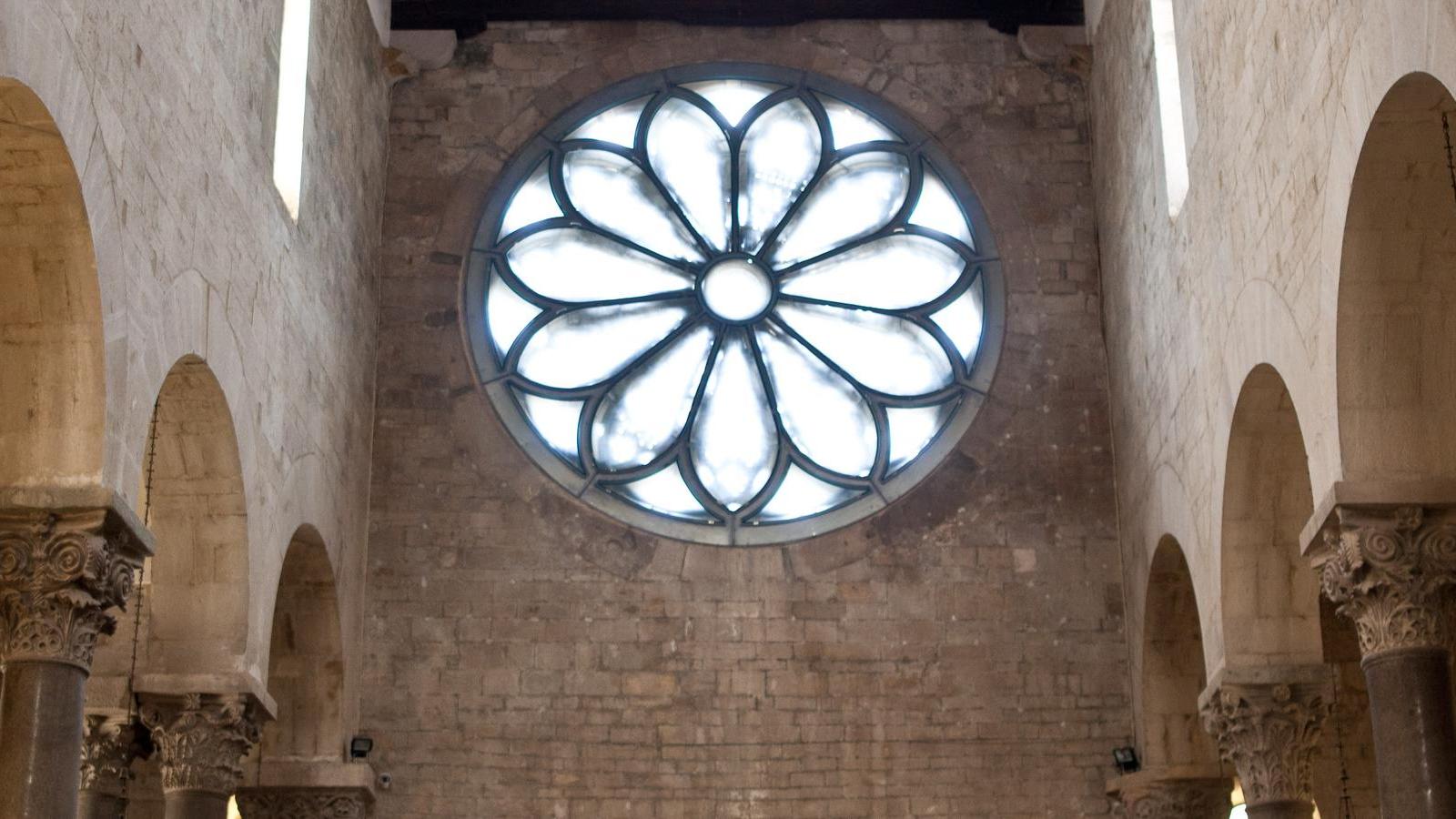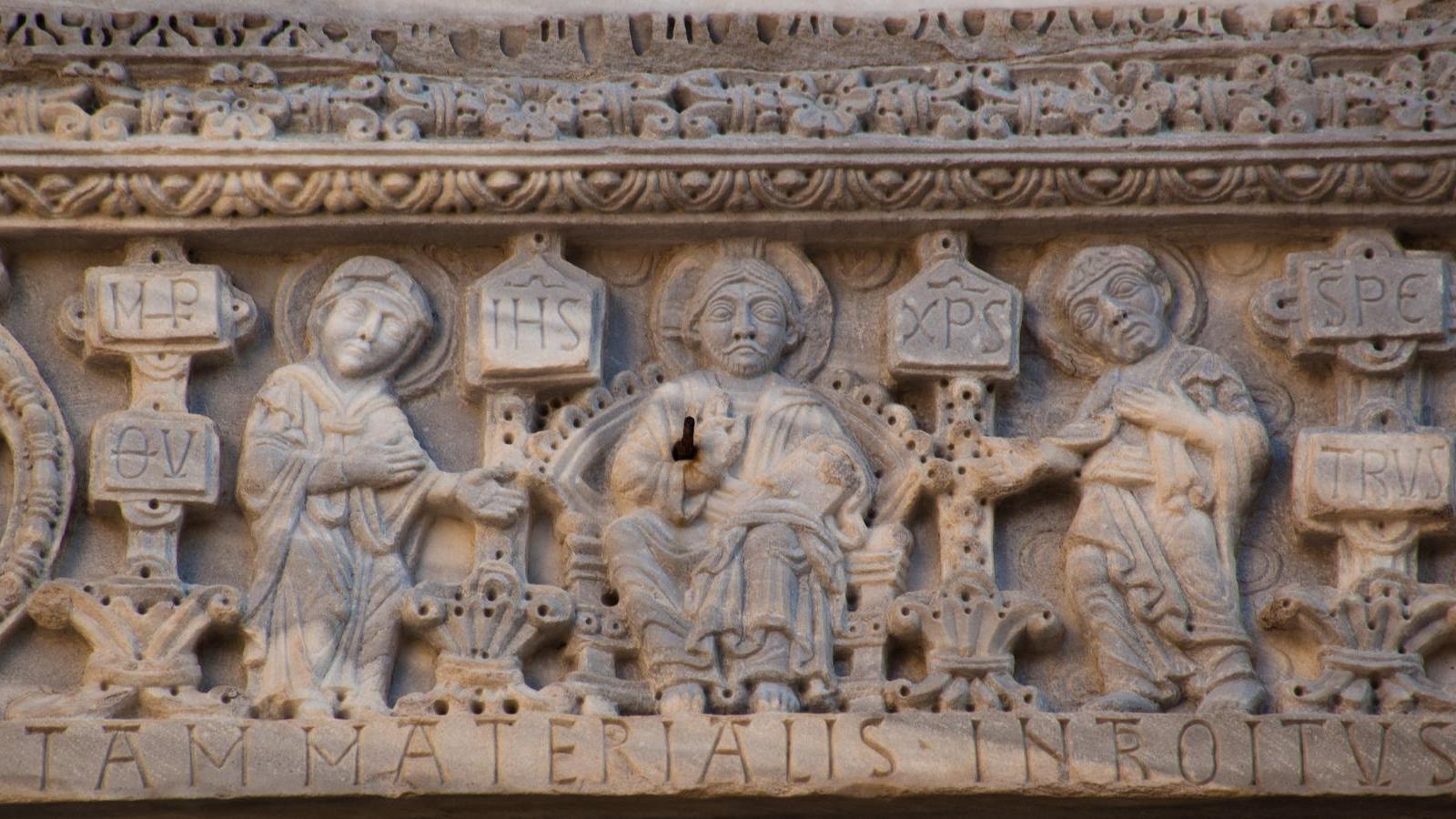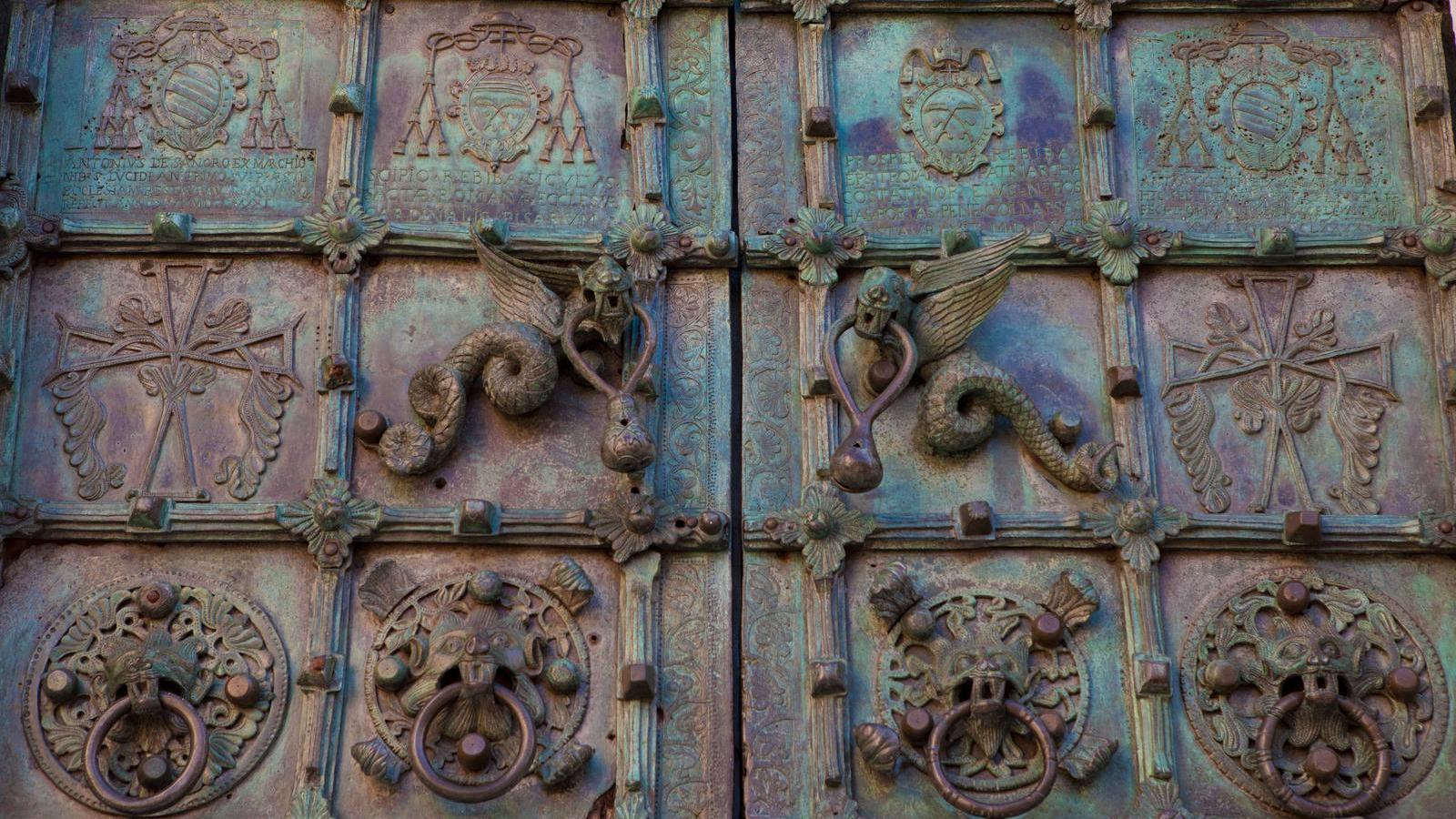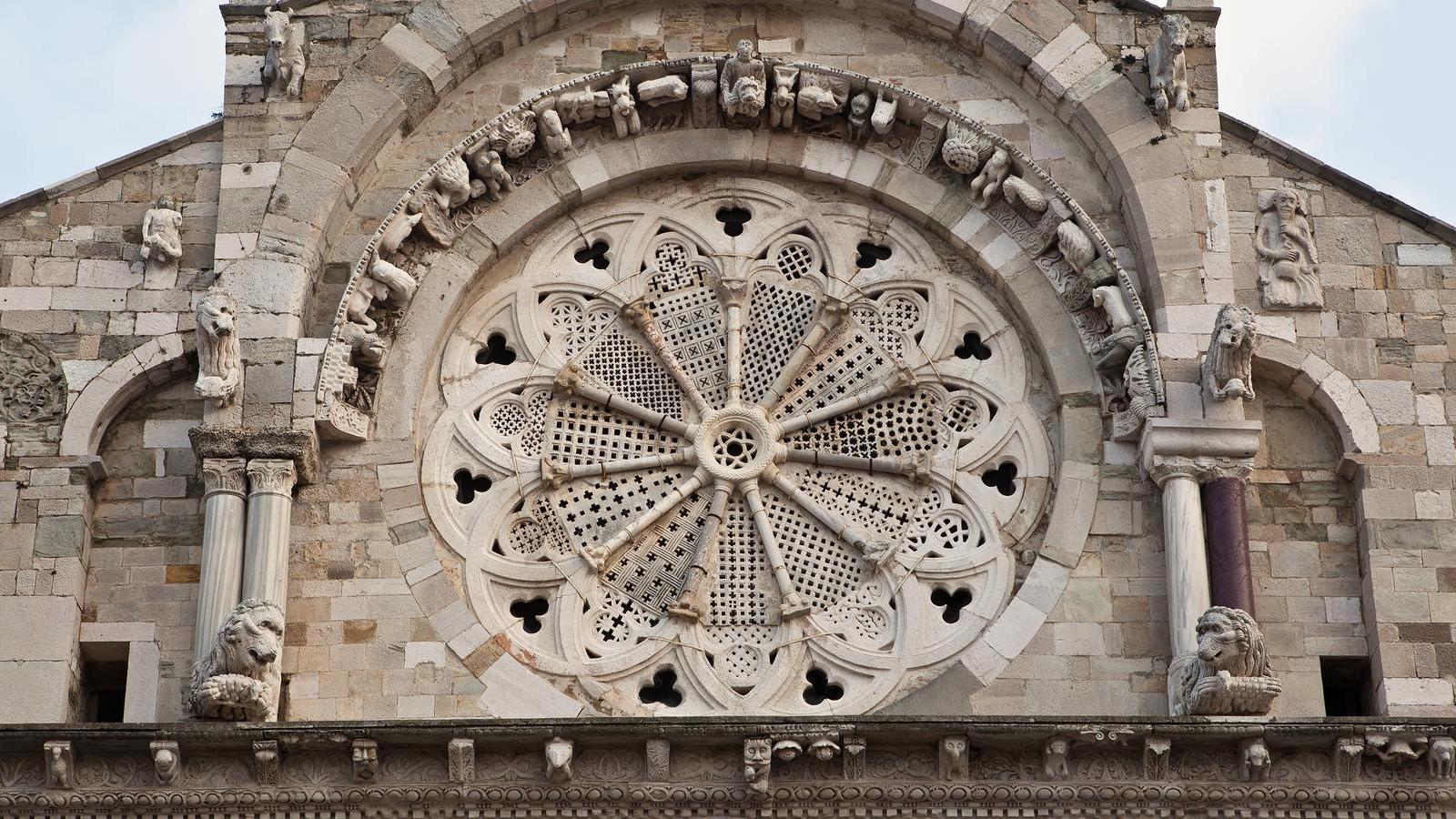Photo gallery
Information
In 1093, in a period of great turmoil in which the weight of Troja was growing in the political and military context of the Norman South, Bishop Girardo founded the Cathedral of Troia, one of the most superb examples of Romanesque Apulian, in which elements of the Romanesque architectural tradition blend with others of oriental suggestion.
Symbol of this architectural excellence is the splendid rose window, unusually divided by eleven columns with Corinthian capitals, from which rise semicircular arches that, Crossing, they form at the points of intersection of the ogives arabesques and triangular spaces that accommodate transennas and trilobi, whose openwork decorations are all different from each other.
The facade of the building is clearly divided into two parts (lower and upper) by a cornice marcapiano supported by an intricate plant design from which protrude heads of lions, dogs, bulls, snakes, hedgehogs, etc...
The lower part of the façade is marked by six round blind arches (three on the right and three on the left of the arch that hosts the entrance portal); they are divided by pilasters with Corinthian capitals; while the arches are enriched by scythed lozenges, interspersed with splayed oculi, to recall the church of Santa Maria Maggiore di Siponto.
The upper part of the facade is populated by anthropomorphic and zoomorphic allegorical sculptures and vegetal decorations.
Here two lame arches act as a buttress to the central arch, at the center of which is the rose window, which is supported by binary columns, resting on lions stylophores.
On the side gables stand out various allegorical figures: on the left a naked body of a woman with flowing hair, a medallion depicting an angel, dancing figures, a male body; on the right a Jew, a male bust with mutilated arm. On the acroterium stands a winged genius on the back of a hanging lion.
Beautiful are the two bronze doors of Oderisio da Benevento: the Gate of Prosperity and the Gate of Freedom. The Porta Maggiore (or Porta Maggiore della Prosperità) consists of 28 panels decorated with high reliefs depicting episodes from the life of bishops and saints, the ring-bearers are heads of lions and the battlements are winged dragons.
The architrave that overlooks the door is of Byzantine workmanship and has carved in the center the figures of Christ between the Virgin and Saint Peter, on the right Saint Eleuterio and on the left Saint Secondino. The Gate of Liberty opens on the right flank and represents in 24 panels the epic resistance of the city of Troy to the siege of Roger II.
The apse is most likely the primitive part of the Basilica. Here the blind arches are supported by powerful columns. It contains the symbol of the victory of the Guelph policy of Troja (the lions) against the imperial policy of Frederick II (the Moor’s head, or the Saracens of Lucera and the reptile, or the city of Foggia).
The interior, like the exterior, is a riot of art and symbols.
The basilical space is divided into three naves, separated by 12 columns, with the first on the right flanked by a thirteenth column (symbol of the cornerstone). All of them have richly carved capitals. The space is occupied by valuable elements such as the baptismal font of the eleventh century placed in the entrance, the lunette aedicules with eighteenth-century frescoes of saints. Beautiful pergamum, carved stone, from the Church of San Basilio. On one side there is a carved dog that bites a lion that in turn tears a lamb, allegory that lends itself to multiple and controversial interpretations.The most interesting interprets the dog as a symbol of the Jewish people who incite the Roman Empire (the lion) against the Son of God (the lamb). On the other side an eagle holds with its wings the book of the Word of God.
The transept has on the left the Chapel of the Saints (of thirteenth-century origin, but rebuilt in the eighteenth century), which houses the seventeenth-century golden wooden busts of the Patron Saints (Sant'Anastàsio, San Secondino, Sant'Eleutèrio, San Ponziano and Sant'Urbano), in addition to the statues of Our Lady of Sorrows by Giacomo Colombo and the relics of the patron saints, kept in silver urns.
On the right side there is the Chapel of the Assumption with the wooden statue of the Madonna Assunta by Giacomo Colombo.
Finally, the presbytery and the apsidal basin can be identified as built from the pre-existing Church of Santa Maria; from the structural point of view the lightness of the cruise is striking, while for the decorations is to be noted on the wall at the bottom of the left aisle, to the side of the altar, a fifteenth-century fresco known as "Dormitio Virginis" which, in a single work represents various moments of the life of the Madonna: Transit, Assumption and Coronation. On the right and left walls of the presbytery are the eighteenth-century frescoes by Giuseppe La Rosa by Squillace depicting the Marriage of the Virgin and the Visit of Mary to Saint Elizabeth.The apse houses the beautiful wooden crucifix of the eighteenth century painted by Pietro Frasa, considered "miraculous" because a Sunday in April 1933 began to emanate copious drops of blood.

